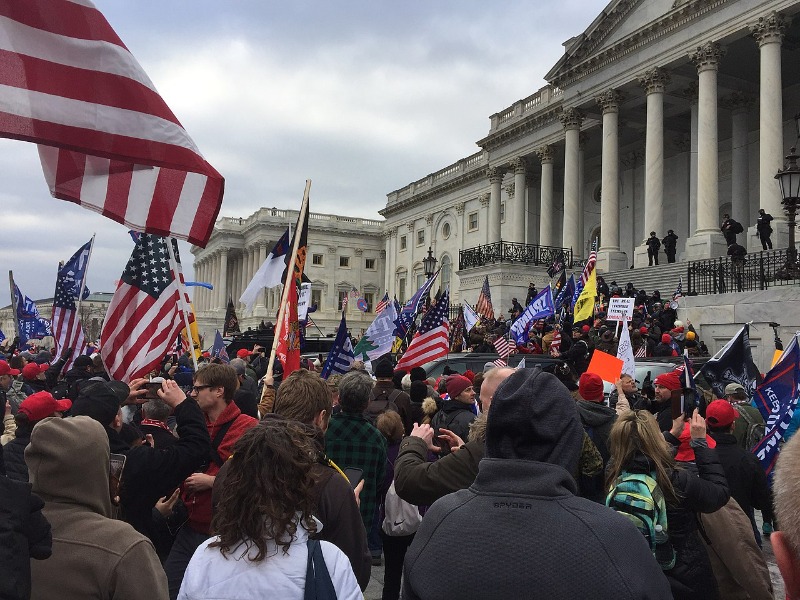The Shapiro Attack and the Growing Risk of Partisan Extremism
The arson attack on the governor’s residence is the latest in a growing wave of violence directed at politicians and other government figures.

Published by The Lawfare Institute
in Cooperation With

The arson attack on Pennsylvania Gov. Josh Shapiro’s residence on April 13 highlights the growing risk of partisan terrorism in the United States. The arson attack, and other attacks in recent years targeting then-presidential candidate Donald Trump, then-Speaker of the House Nancy Pelosi, and other prominent figures show how politicians are at high risk of assassination. The political consequences of these kinds of incidents are profound. Though the recent uptick in politically motivated terrorism has thus far resulted in few deaths, the fallout from even one successful attack could spark worsening polarization, legitimize government crackdowns, and bolster conspiracy theories.
Early on Sunday morning, an arson attack forced Gov. Shapiro (D-Penn.) and his family to flee their residence in Harrisburg, Pennsylvania. The alleged assailant, 38-year-old Cody Balmer, smashed a window with a hammer to break into the home while the governor, his wife, children, and guests were asleep. Using Molotov cocktails made from lawn mower gasoline and beer bottles, Balmer ignited fires in at least two rooms and fled the scene within minutes. Law enforcement responded swiftly, evacuating the family and extinguishing the blaze with no loss of life.
Balmer confessed to the crime after revealing his actions to an ex-partner, who alerted the police. He later turned himself in and admitted to harboring hatred toward Shapiro, telling investigators he would have beaten the governor with a hammer if they had encountered one another during the attack. Authorities noted his demeanor was unusually calm and are investigating the potential role of mental health problems as well as conducting a criminal investigation. Balmer now faces numerous charges, including attempted murder, aggravated arson, burglary, reckless endangerment, aggravated assault, and related offenses. Prosecutors have also charged Balmer with terrorism because of the political nature of the attack.
The attack on Gov. Shapiro’s residence is the latest in a growing wave of violence directed at politicians and other government figures. Since 2016, there has been a sharp increase in the number of politically motivated terrorist attacks and plots against government targets in the United States. These incidents include attacks and plots against elected officials, political candidates, political staff, judges, and other government workers by terrorists motivated by partisan extremism.
From 2016 to 2025, there were a total of 25 terrorist attacks and plots in the United States against government targets motivated by partisan political extremism, compared with a total of just two such incidents in the more than two preceding decades tracked in a CSIS dataset. In just the past five years, the number of incidents is more than triple those in the previous 25 years combined.
The attack on Gov. Shapiro’s residence bears an eerie resemblance to other attacks against government figures in recent years. In October 2022, David DePape broke into the San Francisco home of then-U.S. Speaker of the House Nancy Pelosi (D-Calif.), seeking to hold her hostage, and brutally beat her husband with a hammer. Like Balmer, DePape expressed deep animosity toward his target, citing a mix of political grievances and conspiracy theories, such as QAnon-type claims that Speaker Pelosi and other Democrats are involved in human trafficking and child abuse. In December 2022 and January 2023, after losing his bid for a seat in the New Mexico state legislature in the November 2022 midterms, Solomon Peña orchestrated a series of shootings at the homes of county and state political officials whom he believed rigged the election. And in 2024, then-former President Donald Trump survived two assassination attempts—at least one of which was motivated by political beliefs.
Despite the rise in attacks against government targets in recent years, such incidents have resulted in remarkably few deaths. Since 9/11, only five victims have been killed in terrorist attacks on government targets, excluding attacks on military and law enforcement targets. This trend is likely due to three main factors.
First, of the attacks targeting political figures over the past 30 years, almost 75 percent have occurred at government buildings and offices, many of which have security guards and physical defenses such as blast barriers. Although the attack against Gov. Shapiro occurred at his family’s residence, the home is state-owned and staffed by a security detail and equipped with security measures that enabled a swift police response. Nonetheless, the limited success of the break-in demonstrates the vulnerability political figures experience in their private lives, even with additional security measures.
Second, attackers targeting government figures are typically motivated by specific political grievances and therefore focus on a single or narrow set of individuals rather than conducting indiscriminate mass-casualty attacks. Balmer’s statements suggest he intended to limit his attack to Gov. Shapiro and possibly others in the household. Unlike the 9/11 hijackers or more recent mass attacks such as the 2016 Pulse nightclub shooting in Florida, which killed 49 people, Balmer did not seek to kill indiscriminately or to do so in large numbers.
Third, so far the perpetrators attacking government targets have lacked the weapons and tactical training needed to carry out sophisticated plots. Balmer’s methods—a hammer, homemade Molotov cocktails, and a brief window of access—limited the damage he caused. But the incident reveals how a more capable or better-equipped attacker could have caused far greater harm, underscoring the risk that future events could be more deadly.
Our political environment is growing more dangerous. Threats, plots, and attacks against politicians and other government figures are distressingly common. Such attacks erode public confidence in government institutions, deter political participation, discourage political discourse, and, in the most extreme cases, jeopardize political stability.
It is useful, if painful, to consider what would have happened if the attack on Shapiro, Trump, or another politician succeeded. We would not come together as a nation in grief. Immediately, partisans would blame the other side, noting how their political opponents’ incendiary rhetoric fostered a climate of hate. Those in government could use the attack to justify greater domestic surveillance, declarations that a zealous political movement like antifa on the left or the Patriot movement on the right should be treated as a terrorist group, and other extreme measures. The attack would also foster conspiracy theories, as people speculate about why a prominent and supposedly protected individual “was allowed” to be killed.
American democracy is fragmented enough. Increasing security around senior political figures and maintaining vigilance on both right- and left-wing extremists is necessary to avoid a tragedy that could spiral into a political catastrophe.





.jpeg?sfvrsn=6117c6bf_4)
